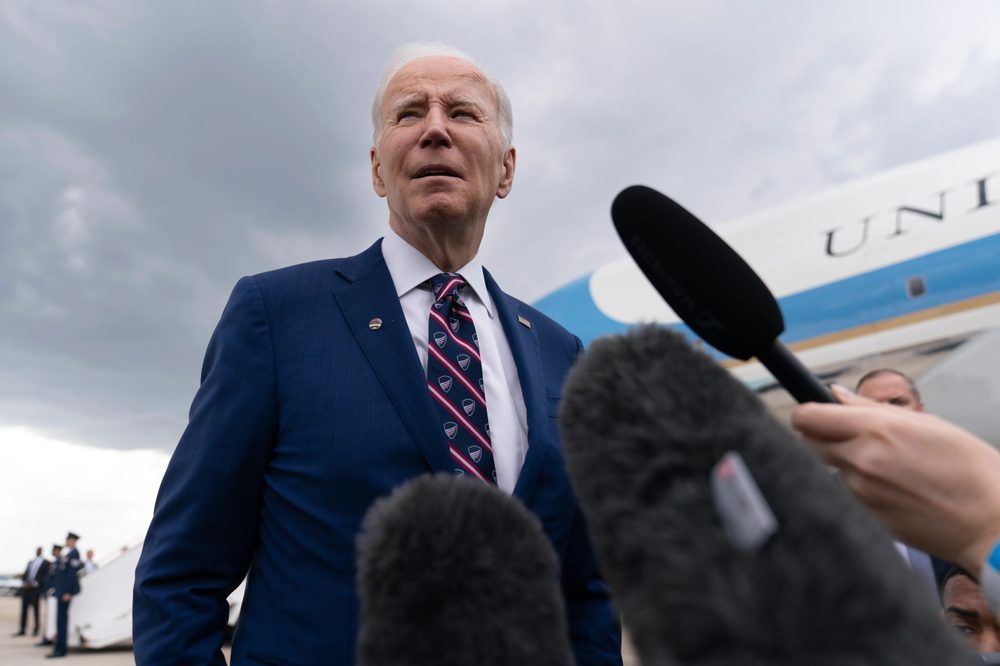United States President Joe Biden, who took office in early 2021, seems to be facing quite the opposition in his bid for the Democratic Party nomination in the 2024 presidential election. Of course, there’s also former President Donald Trump, the frontrunner of the Republican Party nominating race, which is Biden’s strongest adversary.
So far, history seems to be repeating itself, as we all suffer from a 2020 deja vu. Today, we will discuss the most important and noticeable candidates that will be running for the Democratic nomination, as well as what the GOP has in store for this year’s presidential race. And as always, make sure you let us know what you think down below in the comments section!

Joe Biden
President Joe Biden, 81, is already the oldest U.S. president ever. On top of that, he will have to convince voters that he has enough stamina for another four years in office, especially since the approval ratings seem to be quite low.
Biden allies declared that he believed he was the only Democratic candidate who could actually defeat Trump. In announcing his candidacy, Biden also declared it was his job to defend American democracy. He made reference to the deadly attack on January 6, 2021, also known as the attack on the U.S. Capitol by Trump supporters.
Vice President Kamala Harris is his running mate once again, too. The economy will definitely be a relevant factor in his reelection campaign. As the U.S. escaped an anticipated recession and is growing more rapidly than most economists expected, inflation also hit 40-year highs in 2022, and the cost of food is also weighing on voters.
Biden led the response of Western governments to Russia’s invasion of Ukraine, convincing allies to sanction Russia and support Kyiv. But he faced quite the criticism from his party, and rightfully so, for failing to back calls for a ceasefire in the Palestinian territory, where no less than 20,000 people have been murdered and thousands of buildings have been damaged or even destroyed, not to mention all the residents who suffer from the lack of food, water, and medical supplies.
Marianne Williamson
The best-selling author and self-help guru Marianne Williamson, who is currently 71 years old, has launched her second, long-shot bid for the White House on a platform known as “justice and love.”
She ran as a Democrat in the 2020 presidential primary but rapidly dropped out of the race before any votes had been cast. She also launched her latest campaign on March 23 and will be on the ballot in the New Hampshire primary.
Dean Phillips
Dean Phillips, a not-that-famous U.S. congressman from Minnesota, declared in October that he would mount a long-shot challenge to Biden because he doesn’t believe the president can win another term. The 54-year-old millionaire businessman and gelato company co-founder declared his bid in a one-minute video posted online, stating that there might be some challenges that need to be fixed, such as the economy.
The GOP nominees
The 2024 Republican presidential primary isn’t extremely competitive for now. Former President Donald Trump leads the national primary polls with 60% of the vote. The closest GOP rivals are 50% behind.
There’s Florida Governor Ron DeSantis, who scored a distant second place with 12% of the vote, roughly tied with former U.N. Ambassador Nikki Haley. All the other candidates are now polling below 5%.
According to the statistics, those numbers give Trump a minimum 9-in-10 chance of winning the nomination if past polling patterns manage to hold. Naturally, history isn’t a complete guide to the future, so there’s always a small chance something unprecedented might happen.
However, even if I’ve just quoted national polls, the presidential primary won’t play out nationally, and it also won’t be decided by popular vote. The GOP officially selects its nominee at the Republican National Convention in July, where delegates elected via nominating contests in every state and territory might cast ballots for their respective candidates.
In order to know who wins, you need to track how many delegates every candidate has relative to what they might need to be on pace to win the nomination.
However, at the end of the day, every single candidate needs a majority of delegates—1,215 out of 2,429—to win. It’s worth mentioning that their paths to get there are very different. Candidates whose base is evangelical voters, for instance, will have to perform very well in states with, well, plenty of evangelical voters.
Moderate candidates must achieve their numbers in states with more moderate electorates. As a result, one way in which you can figure out whether a candidate is likely to win a majority of delegates is simply to look at who ends up winning more than they “should” have, especially on a contest-by-contest basis, depending on those patterns.

After Super Tuesday, Trump is very strong. DeSantis and Haley will need to catch up.
Let’s take a very rapid look at these benchmarks for some of the most important contests. In the Iowa caucuses, 40 delegates are up for grabs. DeSantis and Haley must win 22 and 26, respectively, so they can stay on track for an overall delegate majority.
If that sounds like much, well, it is. Iowa allocates delegates to candidates rather proportionally, so all these numbers only say that DeSantis and Haley have to win 55 percent and 65 percent of the vote, respectively.
In the meantime, in New Hampshire on January 23, our benchmarks declare that DeSantis has to win 7 of 22 delegates (or 32 percent of the vote), and Haley will have to win 22, which is 100 percent.
Obviously, these statistics are wildly optimistic and unlikely, to say the least. However, the reason DeSantis and Haley had such high benchmarks early on is that we expect them to perform much worse in later voting states.
To put it in other words, Trump is expected to run the table right after Super Tuesday. Out of 197 delegates in January, Trump needs to win 53 to be on track. DeSantis and Haley, on the other hand, need 62% and 76%. After that, in the first four days of March, 134 delegates will receive awards, of which Trump only needs 37%.
Trump is more difficult to beat than his polls indicate.
So, the question is: how does Trump’s national polling lead translate to the delegates? There’s one simple word for that: commanding. If all states would vote today, our model would suggest that the former president would easily win 2,210 delegates out of the total 2,287 that might be allocated to him.
That’s almost 97 percent. We also estimate that he would hit the majority threshold in every single winner-take-all state or territory, which would take all of their delegates, and would also win a minimum of 52 percent of delegates in contests with proportional rules. He would also perform very badly in Iowa and New Hampshire, but even in those cases, we would still expect him to snag a majority of delegates.
However, if DeSantis and Haley manage to exceed expectations in the coming weeks, that might affect their benchmarks in two different ways. First, it might cement their performance in contests that have already occurred.
What’s done is done, and we can’t really reallocate winning delegates to other candidates. What’s even more important is that their upsets would definitely come as a boost in the polls, which in turn might shape our projections for how many delegates they actually need to win in other states.
Do you feel like you could read more about the Modern Democratic Party? Because if you do, we have a wonderful book to recommend for you. You’ll definitely enjoy it.
If you’re interested in learning more, we also recommend reading: The Real Reason American Politicians Are Millionaires







